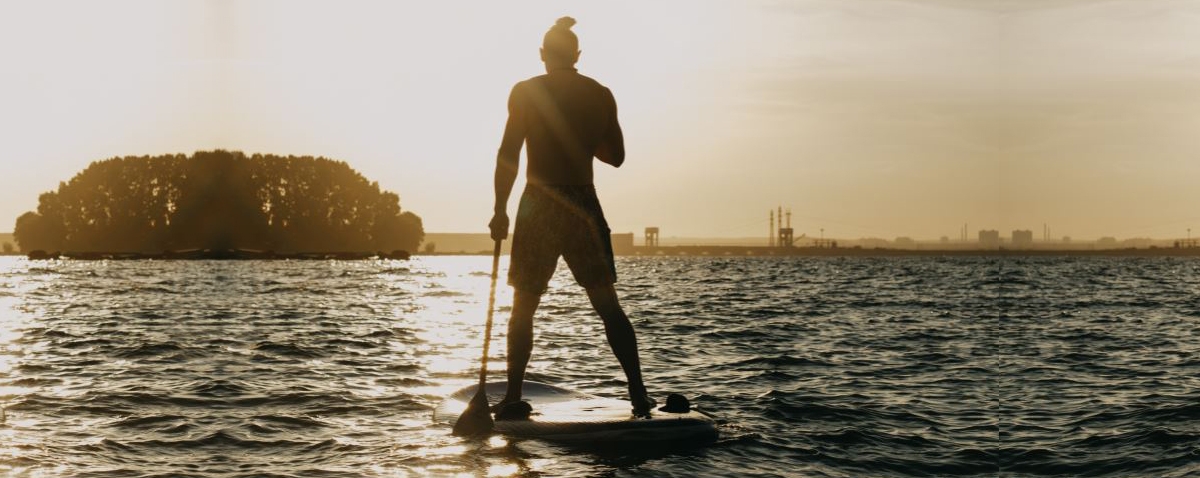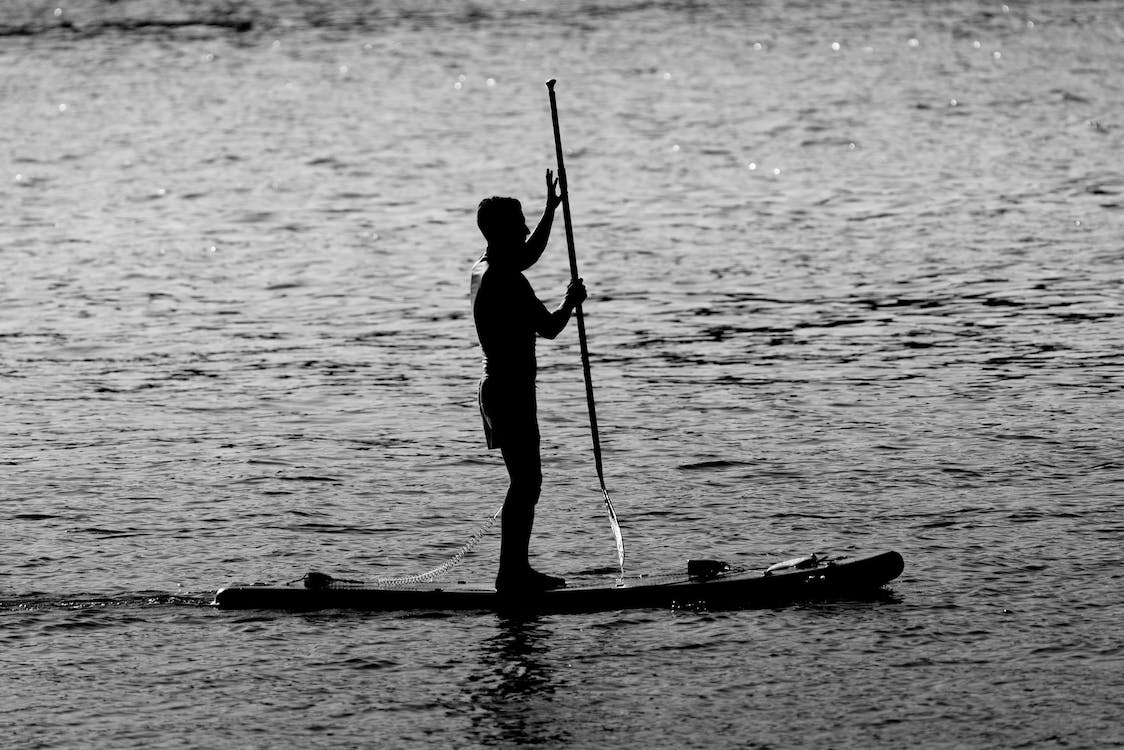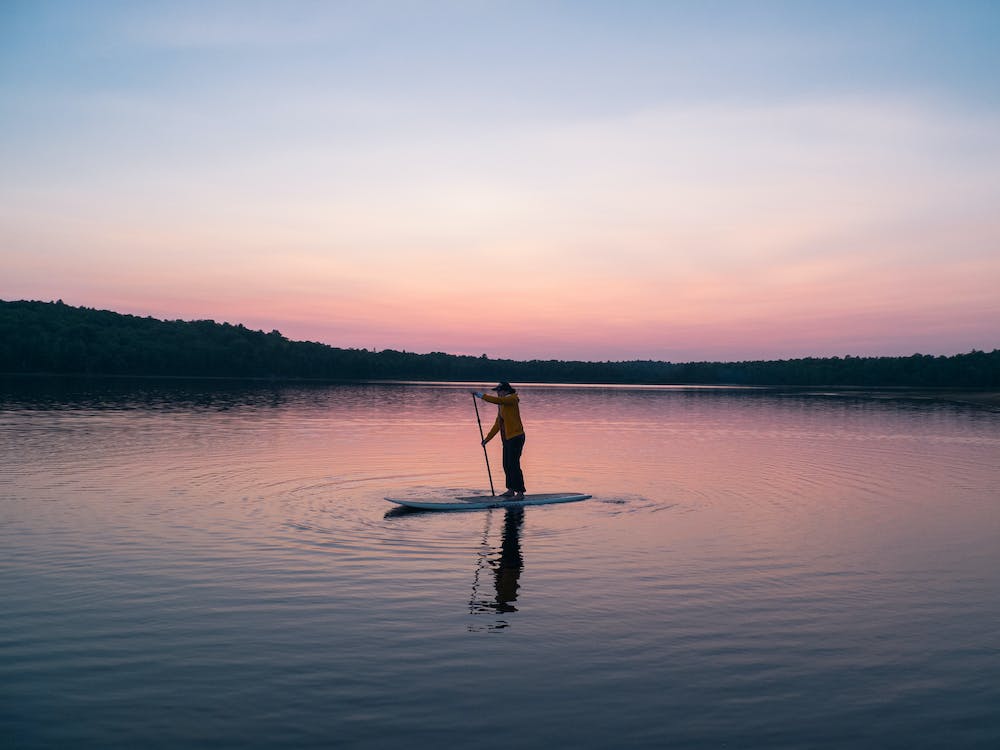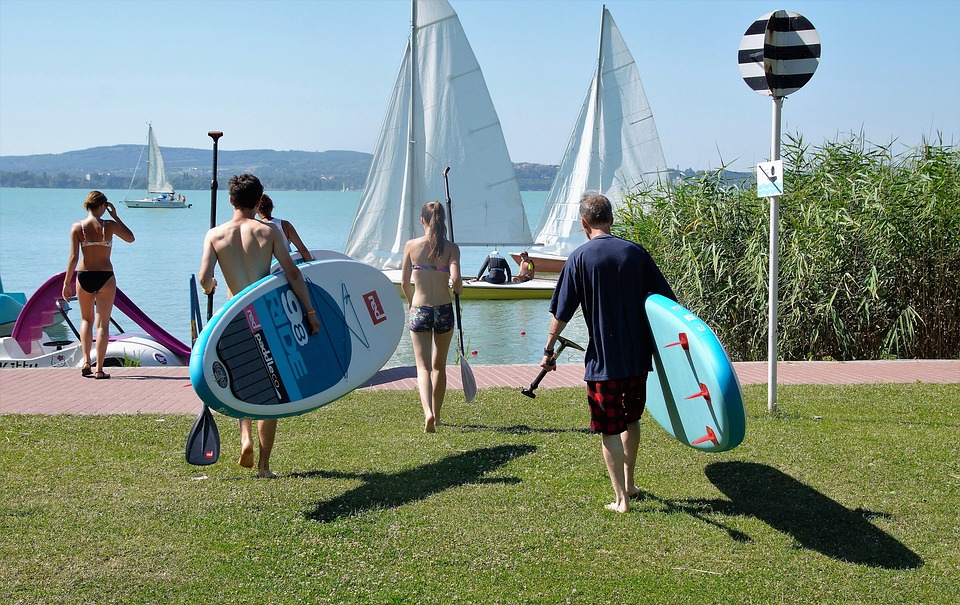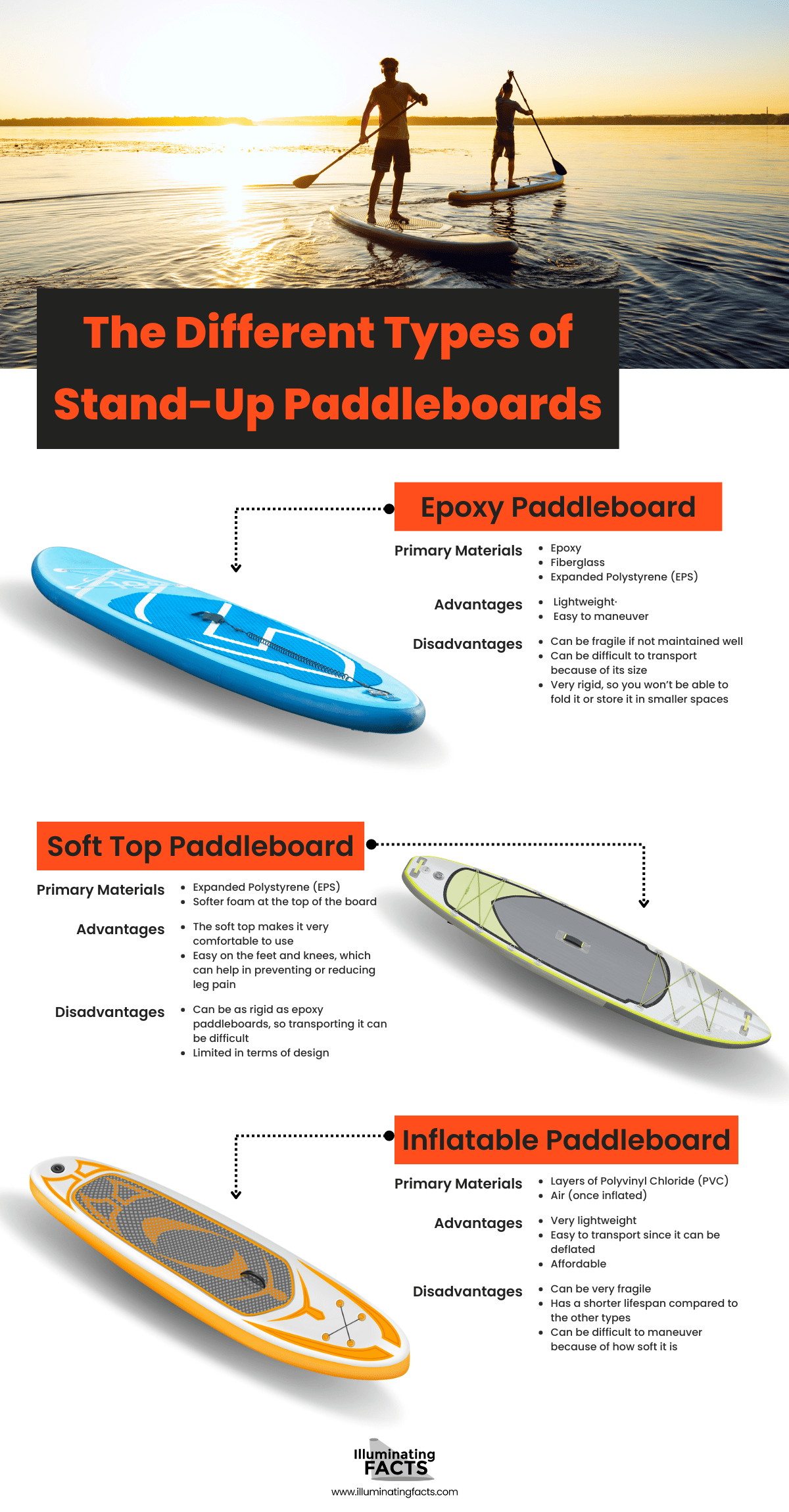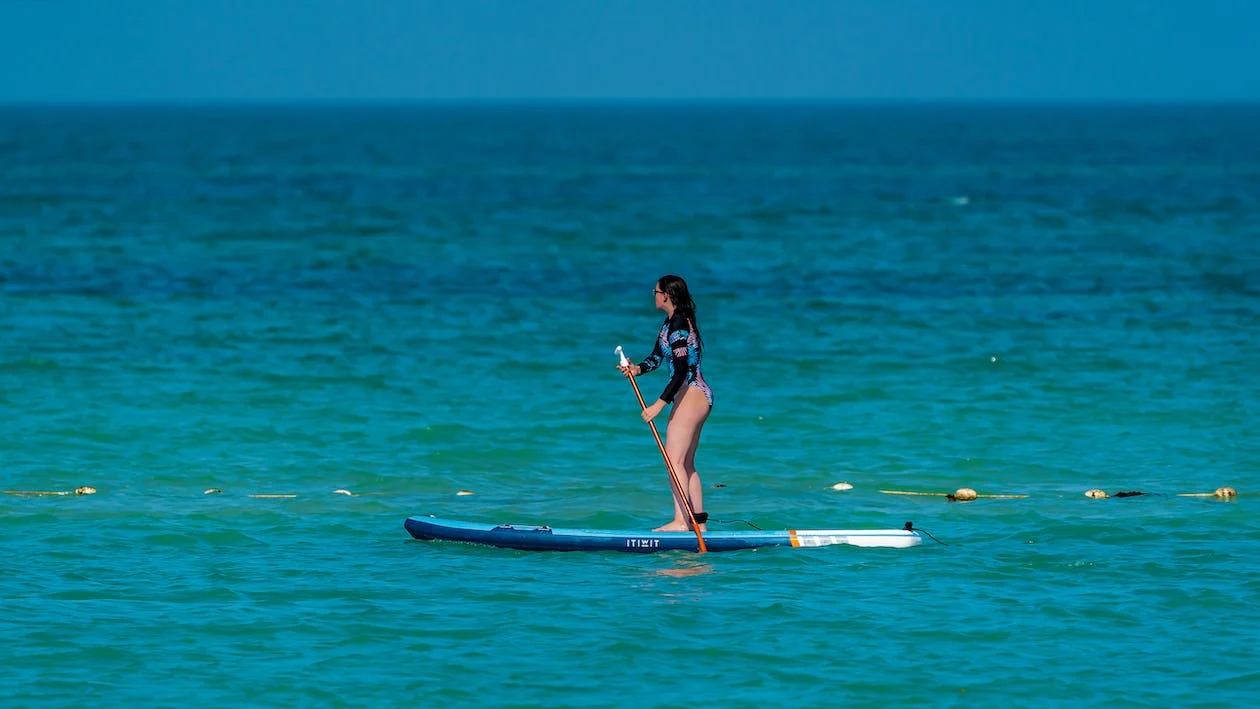Stand-up paddleboard, also known by its acronym SUP, is a popular water sport that is derived from surfing and is believed to have originated in Hawaii. In this water sport, players stand on paddleboards that float on the water. Then, in order for the players to move, they would need to use a paddle to propel themselves and their boards through the water.
Even though stand-up paddleboard is a fairly popular sport in Hawaii and other areas of the United States, there are a lot of people that don’t know where the sport came from and how it was invented. To know where stand-up paddleboarding started, here are the origins of the popular water sport.
Polynesian Beginnings
It is believed that the ancient iteration of stand-up paddleboarding was created decades before Captain James Cook first docked in Hawaii in 1778. Captain James Cook was a British explorer that is known for his three voyages between 1768 and 1779 in New Zealand, Australia, and other islands in and near the Pacific Ocean. Cook was also the first Westerner that stepped onto Hawaiian soil. During his stay in the islands of Hawaii, he saw locals surfing and paddling using boards that are made from Koa, a tree that is endemic to Hawaii. [1]
James Cook became fascinated with stand-up paddleboarding, and it is speculated that he was responsible for introducing the water sport to the United Kingdom. One piece of evidence for the popularity of stand-up paddleboarding in the UK after the 1770s was a photo taken in 1886, which features an Englishman who was paddleboarding in East Anglia, an area in the East of England. [1]
Although most historians say that stand-up paddleboarding originated in Hawaii, there are some that argue that the origins of the water sport can be traced back to 3000 BC when fishermen in Ancient Peru would use long bamboo shafts or sticks to glide through the water while on top of a floating board. The floating board is believed to be the first iteration of the stand-up paddleboard, and this board somehow got introduced in Hawaii before the 1770s. [2]
Hawaiian Roots of Stand-Up Paddleboarding
In Hawaii during the 1770s, the biggest board for paddleboarding was usually given and used by the village chief, and this board was about five meters long. For the other locals, their boards are about two to three meters long. Because paddleboards are much longer than surfboards, they cannot be controlled by simply using a paddler’s hands and feet. So, in order to move the paddleboard through the water, a paddler will need a paddle that is about eight inches taller than the paddler’s height.
Stand-up paddleboard remained a popular water sport in Hawaii over the years, but it would eventually become known in the United States during the 1940s, when a native Hawaiian named Duke Kahanamoku, also known simply as “The Duke,” introduced surfing in the United States after becoming a five-time Olympic medalist for swimming in 1912, 1920, and 1924. [3] Besides being a professional swimmer, Duke Kahanamoku is also a surfing instructor that taught surfing in Hawaii and in other areas of the United States.
While surfing and stand-up paddleboarding are two different water sports, it can be said that the rising popularity of surfing became a way for stand-up paddleboarding to become very popular too. Stand-up paddleboarding has been around since the 1940s, but the one that unintentionally popularized stand-up paddleboarding in the 1970s was Bobby AhChoy, a Hawaiian beach boy that would use a paddle so that he could move his surfboard on the water while viewing surfers and monitoring incoming swells in the beach’s waters. [4]
When the swells and waves are too low for surfing, surfers would grab paddles and use them to move their surfboards on the water, thus resulting in the incorporation of stand-up paddleboarding in surfing’s history and culture.
The Popularity of Stand-Up Paddleboarding Goes Global
Stand-up paddleboarding was one of the most popular water sports in the United States during the 2000s, and its popularity was solidified by Rick Thomas, a Vietnam War veteran and a surfing enthusiast. Rick Thomas, along with his group of friends, popularized stand-up paddleboarding in San Diego, California, which is home to many surfing spots. Through Thomas’s efforts, stand-up paddleboarding gained a huge following in California, and it even prompted a businessman named Bob Long to convert his surfing store to a shop that primarily focused on selling stand-up paddleboarding gear. [4]
Laird Hamilton, a famous American surfer, was photographed in 2002 surfing a six-foot swell while holding a paddle that had an American Flag placed at one of its ends. The photo quickly became trendy in magazines and newspapers, and after the trend, stand-up paddleboarding expanded its reach in different areas of the United States. [2]
Stand-up paddleboarding was fairly popular in the United States and even in some countries in the early 2000s, but it was only in the mid-2000s that it was considered an official water sport, as stand-up paddleboarding was known by many strictly as an activity or hobby that can be performed or done alongside surfing, which is considered to be a more serious sport.
Stand-up paddleboarding races were organized around that time period, and these races led to the creation of divisions or teams that were strictly for stand-up paddleboarding. These divisions or teams were first established in Hawaii and California, but other states would have their own SUP teams soon after.
In 2008, the US Coast Guard officially classified a paddleboard as a “vessel” alongside kayaks and canoes. It was due to this classification that paddlers would need to wear a personal floatation device or life vest while they were stand-up paddleboarding.
By the late-2000s, stand-up paddleboarding became known as a much more accessible water sport compared to surfing. As opposed to surfing, which requires waves or swells and plenty of training, stand-up paddle boarding does not need waves and can already be enjoyed by beginners in just a few minutes or hours of practice.
Because stand-up paddleboarding does not require waves, it can be performed not only on beaches but also in rivers, creeks, ponds, and lakes. It is the versatility of SUP that allowed the water sport to become more known in areas, cities, and countries that don’t have beaches. In 2009, SUP was recognized as the fastest-growing water sport in North America. [5]
The Different Types of Stand-Up Paddleboards
There are different types of stand-up paddleboards for beginners and experts to choose from, and each of these types offer unique features or qualities that may benefit paddleboarders. Here are some of the things you need to know about these different types of stand-up paddleboards. [8]
Type | Primary Materials | Advantages | Disadvantages |
Epoxy Paddleboard | · Epoxy (traditional material used for surfboards) · Fiberglass · Expanded Polystyrene (EPS) | · Lightweight · Easy to maneuver | · Can be fragile if not maintained well · Can be difficult to transport because of its size · Very rigid, so you won’t be able to fold it or store it in smaller spaces |
Soft Top Paddleboard | · Expanded Polystyrene (EPS) · Softer foam at the top of the board | · The soft top makes it very comfortable to use · Easy on the feet and knees, which can help in preventing or reducing leg pain | · Can be as rigid as epoxy paddleboards, so transporting it can be difficult · Limited in terms of design |
Inflatable Paddleboard | · Layers of Polyvinyl Chloride (PVC) · Air (once inflated) | · Very lightweight · Easy to transport since it can be deflated · Affordable | · Can be very fragile · Has a shorter lifespan compared to the other types · Can be difficult to maneuver because of how soft it is |
The Future of Paddleboarding
In recent years, stand-up paddleboarding has become a legitimate water sport, as it now has dozens of different paddleboard races organized in different areas around the world. Some of the most famous SUP races include the Pacific Paddle Games, the Paris SUP Open, the Air France Paddle Festival, and the Yukon River Quest. Here are some details about these three popular SUP races:
- Pacific Paddle Games – this is an event that isn’t necessarily exclusive to SUP, although one of its famous races involves stand-up paddleboards. The Pacific Paddle Games are held in Dana Point, California, where there are about six miles of water where paddleboarders can race. Because of its popularity and the number of foreign and local competitors that are racing in the event, the Pacific Paddle Games is known for having the largest prize money in water sports history.
- Paris SUP Open – the Paris SUP Open, also called the Nautic SUP Paris Crossing, is considered to be the largest paddleboarding race in the world, as it often attracts up to 700 paddleboarders each year. The race is organized in River Seine and passes the Eiffel Tower and the Notre Dame Cathedral. [6]
- Air France Paddle Festival – regarded as one of the highly-anticipated paddleboard events in France, the Air France Paddle Festival in Papeete features five races, which include the 23-kilometer Elite Race and the 8-kilometer Lagoon Race. Some of the races in the event can have beginners as participants, while the other races are strictly for experienced paddleboarders that are ready for a challenge.
- Yukon River Quest – one of the most difficult paddleboard race events is the Yukon River Quest, which is held in the untamed Yukon River terrain. Not only is the terrain difficult to navigate, but the length of the race is also quite grueling, as there are about 444 miles of paddling that competitors need to do in order to reach the finish line. Because of its length, the race can usually go on for three days. [6]
Due to the unfading popularity of stand-up paddleboarding, several sports experts believe that it is only a matter of time before the said water sport becomes a part of the Olympics. [7] In addition, the popularity of the water sport also enabled different countries to organize more SUP events, and even countries that don’t really focus on water sports, such as Slovenia, Greece, and Croatia, have already organized paddleboard races. In the future, we might see more stand-up paddleboard races where beginners and professional paddleboarders can join.
References
[1] Lakeland Kayaks Blog. (2020, November 3). A Brief History of Stand-Up Paddle Boarding. Lakeland Kayaks. Retrieved March 28, 2023, from https://lakelandkayaks.ie/blogs/news/a-brief-history-of-stand-up-paddle-boarding
[2] BOTE Board Blog. (n.d.). THE HISTORY OF STAND-UP PADDLE BOARDING. BOTE Board. Retrieved March 28, 2023, from https://www.boteboard.com/blogs/experience/sup-history-hawaiian-roots
[3] Paul, J. (2018, January 31). Tracing the Colorful History of Stand-Up Paddling. The Inertia. Retrieved March 28, 2023, from https://www.theinertia.com/surf/tracing-the-colorful-history-of-stand-up-paddling/
[4] Niemeyer, A. (2017, July 3). THE HISTORY OF STAND-UP PADDLE BOARDING. SUP Connect. Retrieved March 28, 2023, from https://www.supconnect.com/the-history-of-stand-up-paddle-boarding
[5] SupWorldMagazine. (2013, April 6). The History of Stand-up Paddling. Sup World Mag. Retrieved March 28, 2023, from https://www.supworldmag.com/the-history-of-stand-up-paddling/
[6] SUP Daily Blog. (2019, June 12). Top 5 SUP Events In the World – Paddle Boarding Race. Goosehill. Retrieved March 28, 2023, from https://goosehillsport.com/blogs/news/top-5-sup-events-in-the-world
[7] Paddling Magazine Staff. (n.d.). 9 Industry Experts On The Future Of Paddleboarding. Paddling Magazine. Retrieved March 28, 2023, from https://paddlingmag.com/stories/industry-trends/industry-experts-on-the-future-of-paddleboarding/
[8] Matt G. (2022, November 11). The 3 Types of Stand Up Paddle Boards You Should Know – A Beginner’s Guide. THURSO SURF. Retrieved March 29, 2023, from https://thursosurf.com/blog/types-stand-up-paddle-boards/

